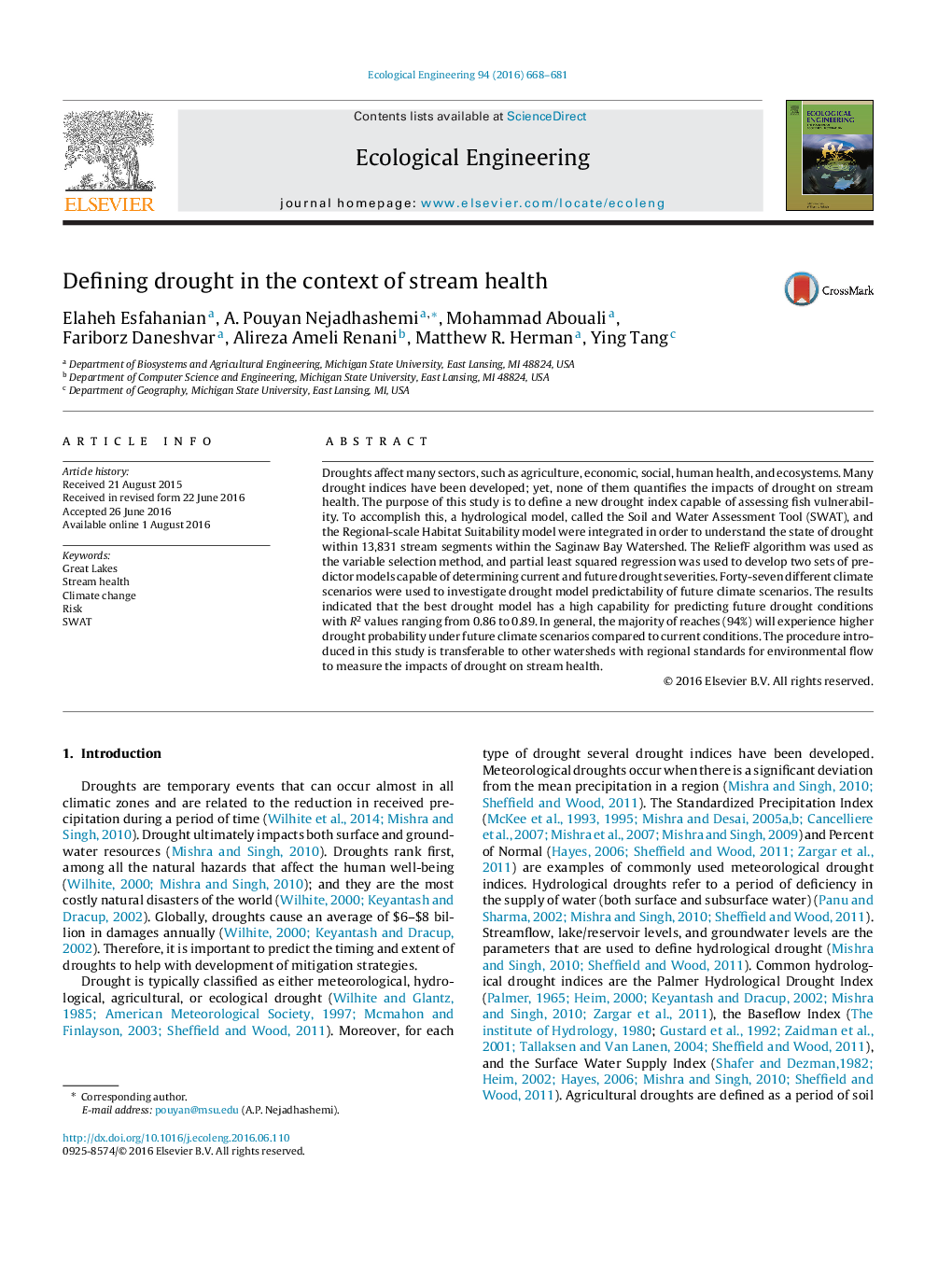| Article ID | Journal | Published Year | Pages | File Type |
|---|---|---|---|---|
| 4388596 | Ecological Engineering | 2016 | 14 Pages |
•A new drought index that focus on the impacts to stream health was introduced.•The ReliefF algorithm was used to select the variables used for drought model.•The drought model was successfully tested on forty-seven climate scenarios.•Majority of study area will experience higher drought probability under future climate.
Droughts affect many sectors, such as agriculture, economic, social, human health, and ecosystems. Many drought indices have been developed; yet, none of them quantifies the impacts of drought on stream health. The purpose of this study is to define a new drought index capable of assessing fish vulnerability. To accomplish this, a hydrological model, called the Soil and Water Assessment Tool (SWAT), and the Regional-scale Habitat Suitability model were integrated in order to understand the state of drought within 13,831 stream segments within the Saginaw Bay Watershed. The ReliefF algorithm was used as the variable selection method, and partial least squared regression was used to develop two sets of predictor models capable of determining current and future drought severities. Forty-seven different climate scenarios were used to investigate drought model predictability of future climate scenarios. The results indicated that the best drought model has a high capability for predicting future drought conditions with R2 values ranging from 0.86 to 0.89. In general, the majority of reaches (94%) will experience higher drought probability under future climate scenarios compared to current conditions. The procedure introduced in this study is transferable to other watersheds with regional standards for environmental flow to measure the impacts of drought on stream health.
